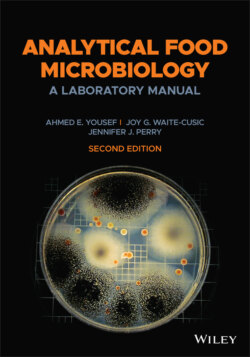Читать книгу Analytical Food Microbiology - Ahmed E. Yousef - Страница 35
Dilution of food homogenate
ОглавлениеWhen pathogens are present in food, they are often found in very small numbers. Foods analyzed for detection of such pathogens are homogenized in an enrichment broth and the homogenate is not diluted further. The mixture is incubated to enrich the pathogen population so that it becomes easy to detect.
Other types of food are analyzed to determine the size of a certain microbial population (e.g., coliform count). In this case, the food is homogenized in a suitable diluent (e.g., sterile saline solution) and the homogenized food is appropriately diluted, usually decimally. A diluent is a liquid used to release the microorganisms from the food matrix, resulting in a suspension that represents the food. The suspension can be further analyzed by enumeration techniques. Ideally, the diluent should be compatible with the food system (i.e., allows for ease of homogenization) and should allow for maximum recovery of the microorganisms by not inducing biological stress (i.e., pH should be near neutral and osmolarity should be close to the microbial physiological level). Diluents include peptone water, citrate buffer, saline solution, and neutralizing buffer. Peptone water is the most commonly used diluent for food analysis; however, it may not be appropriate for some foods. Foods that are naturally acidic or contain antimicrobial compounds should be diluted with neutralizing buffer to prevent the inactivation of microorganisms during the recovery step. A buffer, such as warm (40ºC) citrate solution, is the preferred diluent for microbial analysis of hard cheeses, which will not mix evenly in cold aqueous solutions.
A subset of dilutions is selected for plating on a microbiological medium suitable for sustaining the targeted population. The extent of dilution and selection of the dilutions to be plated depends greatly on the analyst’s expectations of the size of microbial population in the food. The larger the population, the greater the degree of dilution required. An example of a dilution scheme is shown in Figure 2.3.
Figure 2.3 Decimal dilution of food homogenate.
